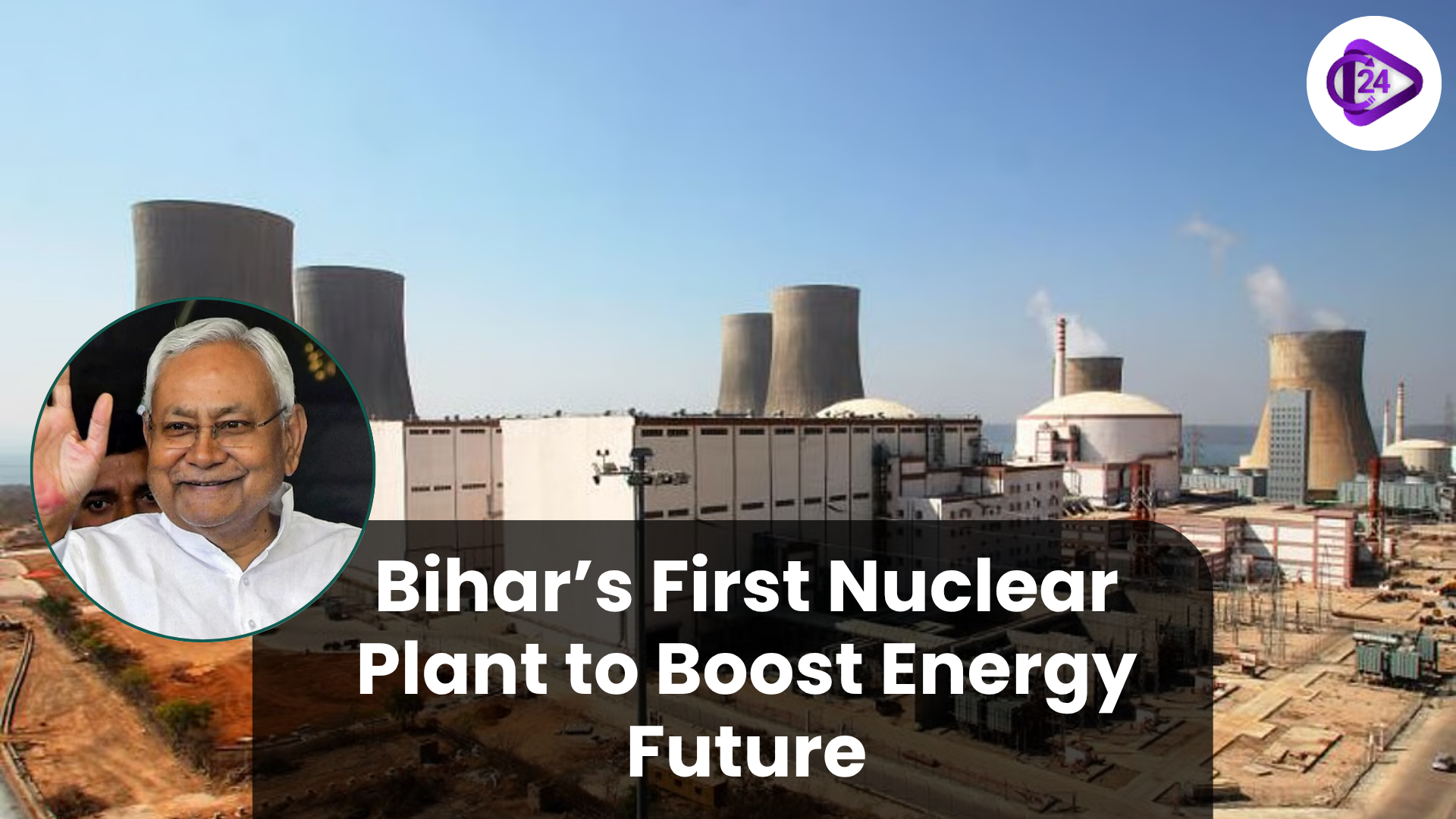
The construction of the first nuclear power plant in India will take place in Bihar; this is the broader strategy which aims to diversify the energy sources. The project will help the country enhance its nuclear energy capacity besides helping to contribute to regional energy security. Simultaneously, a 1,000 MW battery-storage program is underway to fix the grid, and combine renewables. The emergence of Small Modular Reactors (SMRs) is a great stride in the Indian nuclear community with emphasis on safety, efficiency as well as flexibility. To meet the demands, the government also plans to expand its nuclear energy power to a great extent by 2031-32.
Context
-
This announcement comes after the attempts of the Government to promote the nuclear energy capacity in India.
-
Even with this, a 1,000 MW battery storage capacity will also be established in Bihar.
-
This project is also targeting enhancing grid stability and facilitating the integration of renewable energy.
-
This will be done as the Government will provide viability gap funding of Rs 18 lakh per MW under this project.
About
What is Nuclear Energy?
-
During nuclear reactions, energy could be generated in the form of nuclear energy by fission (atom separation) or fusion (atomic nuclei combination).
-
In nuclear fission heavy atomic nuclei such as those of uranium or plutonium are broken apart, forming lighter nuclei, but allowing immense quantities of energy to be liberated.
-
It is exploited in the production of electricity in nuclear power plants.
How do you define Small Modular Reactors (SMRs)?
Small Modular Reactors (SMRs) are new improved nuclear reactors that can have a capacity of power ranging up to 300MW(e) per unit compared to the traditional nuclear reactors that have the capacity to produce a generating capacity of one-third that of SMR power.
-
Small: Physically small unlike the conventional nuclear reactors.
-
Modular: Components and systems are preassembled in the factory and can be transported to the place of installations in order to have flexibility with deployment.
-
Reactors: SMRs produce energy by producing nuclear fission heat.
SMRs are of 4 main types:
-
Light Water Reactors
-
High-Temperature Gas Reactors
-
Liquid Metal Reactors
-
Molten Salt Reactors
Positives of SMRs:
-
Improved Safety: SMRs have in-built safety options like natural convection and gravity driven cooling that make them fail-safe in order to avoid any overheating without needing an external source of energy or operator action.
-
Flexibility: The modular design of SMRs enables a gradual gain of power, which is well suited to meet the increasing need in energy.
-
Reportable in Remote Areas: SMRs have the advantage of being smaller in size and they are suitable to be used in smaller grid systems and also used in district heating and desalination of water.
-
Efficient Cost: Construction of an elaborate amount of structures on site can be expensive and costly. However, prefabrication involves a lot of savings in regard to expenses, and time expenditure.
Government Plans of Improving the Nuclear Capability of India
-
The target of India is an enhancement of its nuclear installed capacity in 2031-32 to 22,480 MW as against its current capacity of 8,180 MW.
-
Various states, including Gujarat, Rajasthan, Tamil Nadu, Haryana, Karnataka, and Madhya Pradesh, are already constructing and commissioning 10 new reactors (with the total capacity of 8,000 MW).
International Cooperation
-
The government has approved in principle to set up 6 x 1,208 MW nuclear power reactors within Kovvada in Andhra Pradesh by cooperation with the United States.
Recent Trend of Indian Nuclear Energy:
-
Uranium discovery: A major new uranium discovery was made around India oldest uranium mine in Jaduguda in Jharkhand.
-
Rajasthan Atomic Power Project (RAPP-7): On September 19, 2024, Unit-7 of RAPP got critical, which is a significant development in the work of a nuclear reactor. It is the third local nuclear reactor to attain this role.
-
Kakrapar Atomic Power Station Units 3 & 4:These 700 MWe reactors started commercial operation in FY 2023 24, the first of India Pressurized Heavy Water Reactors (PHWRs) of this capacity started in commercial operation.
-
Kalpakkam 500 MWe PFBR: India started the commissioning of its first 500 MW Prototype Fast Breeder Reactor (PFBR) in 2024 with primary sodium filling, commissioning of sodium pumps and core loading.
Mission on Nuclear Energy:
-
Capacity Target: The target aims at achieving 100 GW by 2047 (The current capacity stands at 8 GW).
-
Small Modular Reactors (SMRs): 3000 MW of SMRs is an envisaged development supported by a 20000 crore fund in research and development of indigenous SMRs. A focus is on five functional SMRs in 2033.
-
Participation in the Private Sector: It has been proposed to amend the important legislations in this regard such as the Atomic Energy Act, 1962, and the Civil Liability Nuclear Damage Act, 2010 in such a way that proper frameworks and compensation mechanisms in the event of a nuclear accident have been put in place.
-
Capacitor growth: 10 modern reactors (8 GW) in several states are in progress. Another is a 6 x 1208 MW nuclear plant in Andhra Pradesh that was approved together with the USA.
-
Nuclear Partnerships: India is working with the private industry to establish Bharat Small Reactors (BSRs) and Bharat Small Modular Reactors (BSMRs).
Conclusion
The Bihar nuclear power plant is one of the significant milestones towards India enhancing its energy mix, optimizing energy security in this region, and opening itself to modern nuclear technologies. The emphasis on Small Modular Reactors and increased nuclear capacity represents the devotion of India in fulfilling its aggressive energy objectives and continuing its involvement in the international nuclear energy industry.










